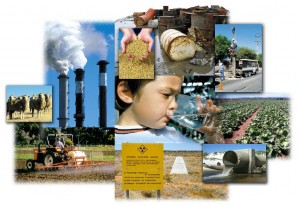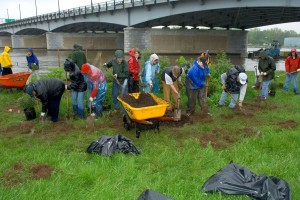Announcing the Youth Leaders for EPA’s Youth Climate Justice Work Group
By Mustafa Santiago Ali
About the author: Mustafa Santiago Ali is the Senior Advisor to EPA Administrator Gina McCarthy for Environmental Justice and Community Revitalization.
As I travel across the nation, I see the incredible work that young people are doing to make our country stronger. The power of youth is undeniable. Their leadership has been a driving force in many of the most successful social justice movements globally. From the Civil Rights movement to the Chicano movement and the American Indian movement, each of these and many more have been driven by young people addressing the injustices happening in their communities.
The legacies of these movements can be seen today throughout the environmental and climate justice movements across the country. Young people are engaged and thinking critically about tackling these challenges and opportunities of the 21st century.
And that is why I am pleased that today EPA Administrator Gina McCarthy announced that we have selected 15 emerging young leaders to participate in the National Environmental Justice Advisory Council’s (NEJAC) Youth Perspectives on Climate Justice Workgroup. The workgroup is comprised of young people, ages 18 to 29, at the forefront of the fight against climate change. They will assist EPA in developing strategies and finding opportunities to combat climate change and to empower other young people to take on the challenge. These youth will amplify the diversity of the NEJAC by contributing unique backgrounds and perspectives that will enhance the work of the Council.
They have relevant hands-on experience from working with communities on projects related to climate change, health and adaptation, environmental science, and economic resilience.
And these young leaders have already accomplished amazing things.
Like soon-to-be high school graduates, Stefan Petrovic, who co-founded a youth initiative emphasizing climate activism, and college-student William DiGravio, who founded the award-winning Students for Climate Action organization, to Kathy Tran, who collaborated with vulnerable populations nationally and internationally while pursuing her doctoral degree.
While Oforiwaa Pee Agyei-Boakye was working internationally on a climate change campaign in Ghana, Anthony Torres was working with various non-profit development agencies in Washington D.C., and Nikita Robinson has continued to work with her tribal community to combat the impacts of climate change in Alaska.
Their work with nongovernmental organizations is vast: varying from Amber Vignieri who works as a Communications Coordinator at Elevate Energy to Eriqah Vincent who works as the National EcoLeaders Coordinator with the National Wildlife Federation to Amanda Nesheiwat who is a UN Representative for the Foundation for Post Conflict Development.
They are fluent in utilizing critical mapping and data tools, like Melake Getabecha, who used mapping tools to show heat vulnerability in communities in Colorado.
They are civil activists – like Yudith Nieto – who works with groups nationally and internationally to build inter-generational movements that advocate for environmental justice, and civil engineers – like Kayla DeVault – who is designing a program on her Native reservation to allow students and professionals to work with tribal communities on climate adaptation and sustainability projects.
They are well versed in critical thinking and cross-cultural communications skills. Devin Crowther have presented a national conferences; Samantha Parker served as an international delegate in Paris for the UN Climate Change Conference; and Samantha Shattuck led workshops on youth engagement at the UN Climate Change Conference in Peru.
I know that collaborating with these young people will improve the capacity of the NEJAC and the EPA to develop strategies and to find unique opportunities to combat climate change. If we are willing to create a space for their voices, advice and recommendations, their innovation, energy and ideas can position our country to be leaders in the emerging climate economy.
Congratulations to all those selected! We are excited to learn from you and work with you towards addressing these incredible challenges and opportunities.

















